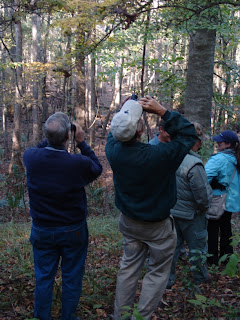
From the Master Naturalist webpage: What is a Master Naturalist?
A Master Naturalist is a person who has undergone specific training and who regularly volunteers time toward various projects. Typically, Master Naturalists seek to make a difference in helping to maintain the quality of our native ecosystems through training designed to help ‘read’ the landscape of the state. This includes understanding the underlying geology, specific inhabitants (birds, plants, mammals, etc.), ecology and the impacts of humans on the landscape including how we conserve our amazing natural environments. Once trained, Master Naturalists volunteer in a variety of projects. In essence, the Master Naturalist program aims to turn out volunteer citizen scientists who can positively impact the natural resources of the state.

While learning about the geography and characteristics of the swamp, the participants were also practicing the tree and plant identification skills they had learned during previous field trips. The images show the group once it moved from the boardwalk to the bluff overlooking Mallard Lake, which is approximately two miles downstream. The high bluffs have underlying limestone near the surface giving rise to a plant community called the calcareous forest.
From Richard Porcher's and Douglas Rayner's A Guide to the Wildflowers of South Carolina: The calcareous forests occur on bluffs, slopes, or moist flats that overlay calcareous substrates. The substrate is either marl or limestone that was laid down as marine deposit when the ocean covered the coastal plain. The calcium from the underlying substrate is a major factor shaping the diversity and composition of the vegetation. Certain species of plants, referred to as calcicoles, thrive in a basic to circumneutral soil that results from the presence of calcium ions. These species generaly are mixed with the flora of the surrounding community to form a diverse community. Classification of the various calcareous communities is not well developed; however, we do recognize two well-developed types. (One is the calcareous bluff forest which the group visited at Mallard Lake).
No comments:
Post a Comment